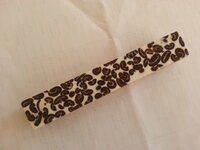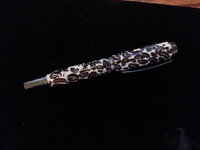I am up to pen 5, and thought I would try a coffee been Cuban or slimline. I was politely warned (and with good intentions) by much more experienced tuners that this is not the one to try before turning several dozen other types of materials.
Well, I am not afraid from learning from my mistakes, and very humble to learn from the experience of others. If you have a chance, I would love to hear the how's, what not to do's, and whatever else you can share. I would like to smell the coffee, so I am assuming certain finishes are out. I will cross that bridge when I get to it, but would love to hear how you successfully turn them.
Thank you for reading and any experience you are inclined to share.
Well, I am not afraid from learning from my mistakes, and very humble to learn from the experience of others. If you have a chance, I would love to hear the how's, what not to do's, and whatever else you can share. I would like to smell the coffee, so I am assuming certain finishes are out. I will cross that bridge when I get to it, but would love to hear how you successfully turn them.
Thank you for reading and any experience you are inclined to share.


